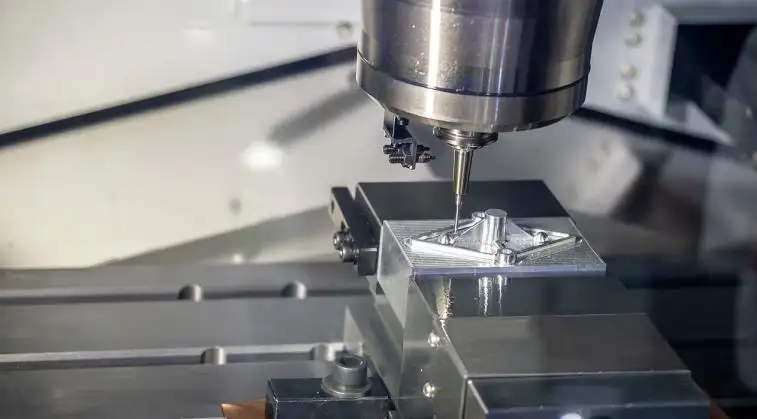Why Precision Parts CNC Machining Cuts Your Scrap Rate in Half
Precision Parts CNC Machining turns difficult designs into repeatable, high-yield production without gambling on quality or schedule. We meet the same issues across sectors: rising scrap, erratic lead times, and inconsistent outcomes. Below, we explain how an expert, process-driven approach removes variation, lifts first-pass yield, and protects margins.

The Real Cost Of Scrap And The Power Of Process Control
Scrap rarely comes from one dramatic error. It creeps in through small misses that add up: a tool that wears sooner than expected, a fixture that flexes under load, a CAM path that overheats a corner, or a tolerance callout that isn't aligned with function. Precision Parts CNC Machining addresses these risks by converting tacit know-how into measurable, auditable steps.
At GD Prototyping, we program once and replicate precisely - across 3-axis, 3+2, and simultaneous 5-axis milling, plus CNC turning. Complex geometry is routine, not an exception. Our shop runs 24/7, supported by disciplined setups, documented tool libraries, and in-process verification. Capability matters: we routinely hold ±0.05 mm and achieve Ra 0.2 µm when the print demands it. That level of control removes the micro-errors that become macro-scrap.
Why yields improve with Precision Parts CNC Machining:
• Stable Fixturing & Toolpaths: Rigid workholding and validated CAM strategies prevent chatter, deflection, and out-of-spec features.
• Closed-Loop Measurement: In-process probing confirms critical dimensions before parts leave the vise.
• Material-Specific Recipes: Feeds, speeds, cutters, and coolants are tuned to each alloy or polymer to avoid heat, burrs, and warping.
• Fit-For-Purpose Tolerancing: We follow DIN 2768-1 (fine for metals, medium for plastics) and review drawings to align tolerance with function.
• Surface Strategy: When "as-machined” isn't ideal, finishing removes tool marks and stabilizes cosmetics without compromising dimensions.
Reduce variation and you reduce scrap. Our customers often see scrap rates fall by half because the root causes - guesswork and drift - are engineered out of the process.
Speed Without Waste
Fast timelines often drive scrap when teams bypass good practice. We flip that script. Precision Parts CNC Machining lets you move quickly and preserve quality because the same digital thread carries through from first article to repeat orders. You iterate rapidly at the start, then scale with confidence - no hard tooling, no sunk costs.
We support 3-axis, 4-axis, 3+2, and 5-axis milling for multi-face features and undercuts, and CNC turning for tight cylindrical work with axial/radial holes, flats, grooves, and slots. Whether you need a single functional prototype or thousands of end-use parts, each run benefits from the last because the process knowledge remains in the program, fixtures, and inspection plan.
Flexible capacity, real outcomes you can plan around:
• One-On-One Support, Fast: A named project manager responds within 12 hours.
• Wide Material & Finish Options: Aluminum, steels, titanium, copper alloys, and engineering plastics; bead blast, anodize, passivate, and more.
• Rapid Changeovers: Reprogram quickly for ECOs and late design tweaks - no hard molds required.
• Low-Volume, High-Mix Friendly: Ideal for bridge builds and frequent revisions.
• Consistent Reliability: Cosmetic control and tight tolerances maintained across batches.
For NPI teams, two levers matter: time and risk. With tight tolerance CNC milling services and low-volume CNC machining, you compress schedules while keeping process discipline. That's why urgent launches no longer mean quality trade-offs.
How We Prevent Rework At The Source
Rework drains budgets and time. We eliminate it by building quality into every step of the job. Before chips fly, our engineers review drawings, GD&T, critical-to-quality features, and risk areas such as thin walls, deep pockets, tall stand-offs, or long tool reach. When helpful, we propose minor design adjustments to preserve function while improving manufacturability, thermal stability, and tool access. That collaboration improves the first build - and every repeat.
Our Precision Parts CNC Machining workflow is designed to keep yield high and scrap low:
1) DFM & Transparent Quotation
We provide actionable feedback on tolerance, geometry, and material choices. The goal: optimize for function, cost, and risk without diluting performance.

2) Process Planning & Tooling Strategy
We select cutters, holders, and fixturing to protect critical features. CAM paths are validated on the stock model; inspection points are chosen for the features that matter most.
3) First Article Confirmation
We measure the part against the drawing and share a full dimensional report. Findings feed directly back into the program and setup sheets.
4) Lights-Out-Capable Production
Where appropriate, machines run unattended with in-process probing. That stability is what makes repeatability real.
5) Finishing & Final Inspection
Cosmetic or protective finishes are sequenced to avoid dimensional drift. Final QC confirms that every critical dimension meets print.
6) Documentation, Delivery & Support
You receive traceable records and clear communication. If you reorder or revise, the same digital assets ensure consistent quality.
✅ What This Means For Your KPIs
- Fewer Rejects: Less scrap and less rework keep Cpk predictable.
- Shorter Lead Times: No tooling delays; rapid changeovers keep schedules tight.
- Lower Total Cost: You pay for parts that ship, not do-overs.
- Better Launches: Stable processes reduce risk during NPI and bridge builds.
Where should you start? If a part is currently risky - thin walls, multi-side machining, tight surface callouts, or complex 5-axis features - run a pilot with us. We'll apply the same rigor we use for production, but on a low-volume, quick-turn basis. That way you see the impact on scrap, yield, and schedule before scaling.
Call To Action: See Scrap Drop On Your Next Build
If scrap, rework, or unpredictability are eroding your margin, let's change the math. Talk to GD Prototyping about a pilot using Precision Parts CNC Machining. You'll get rapid DFM, a clear process plan, and a schedule you can trust. Start with one complex component - or a high-mix batch - and measure the difference in yield, lead time, and total cost.
Get a quote today and turn waste into wins.

